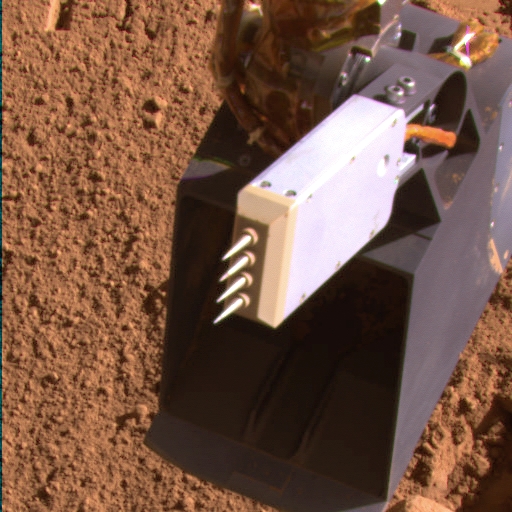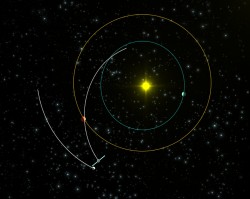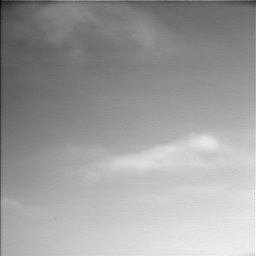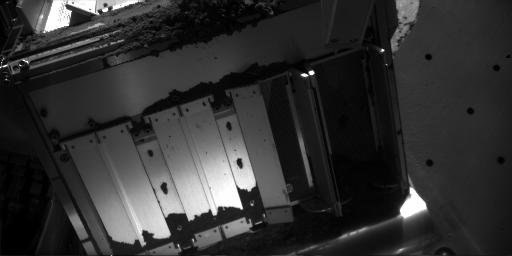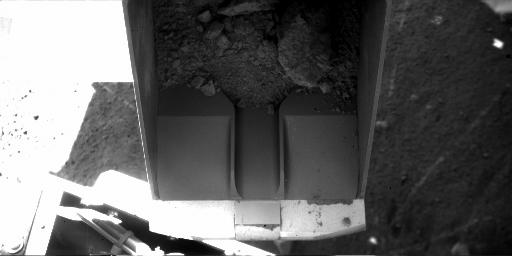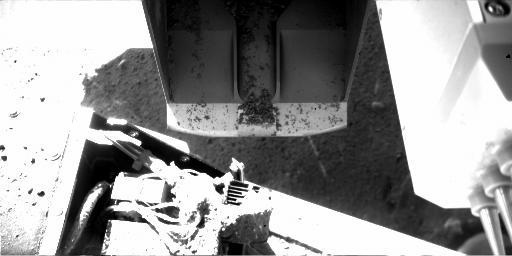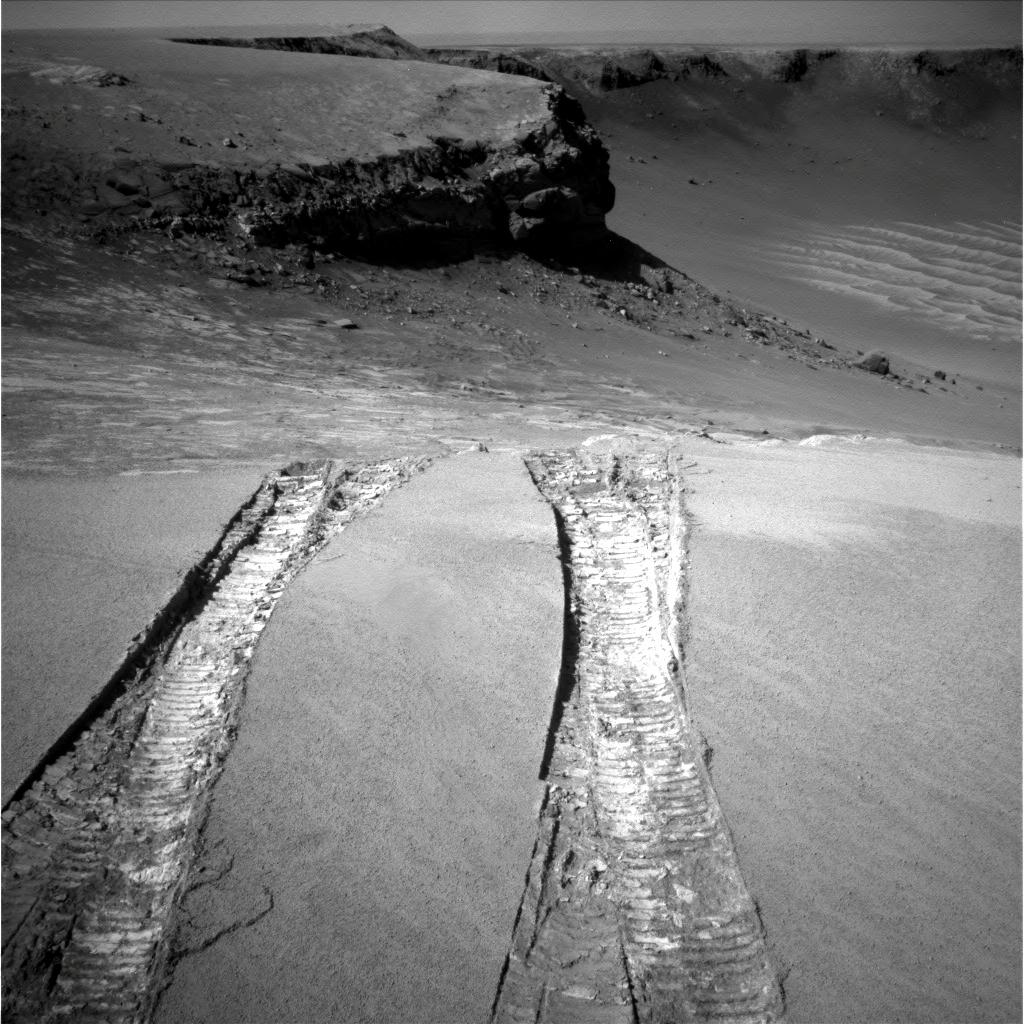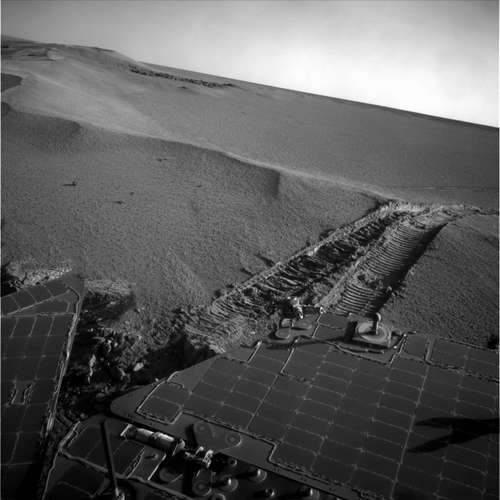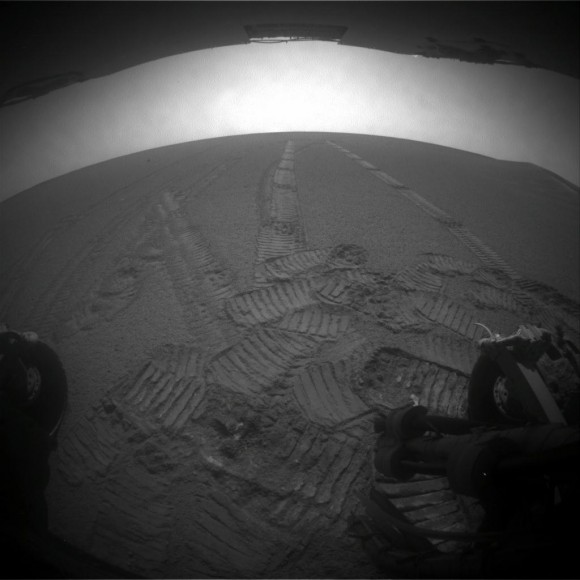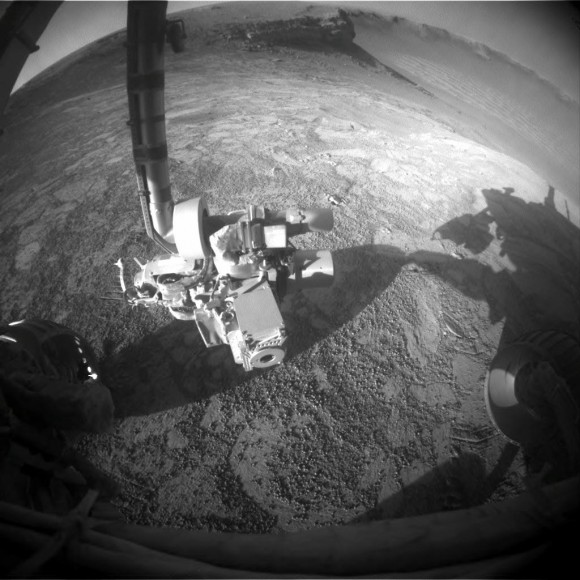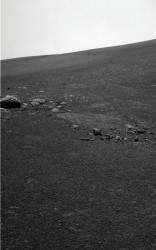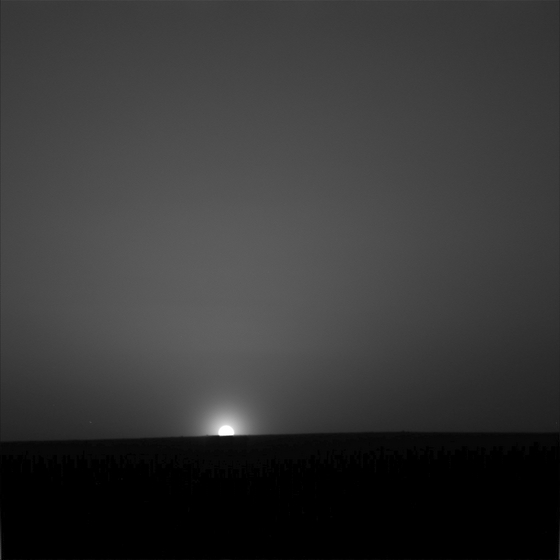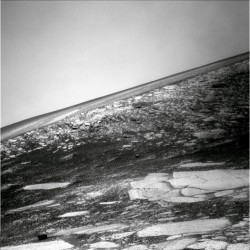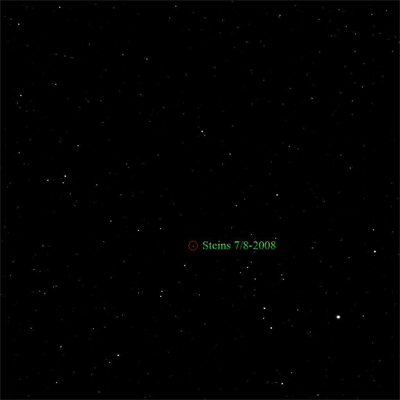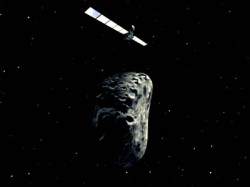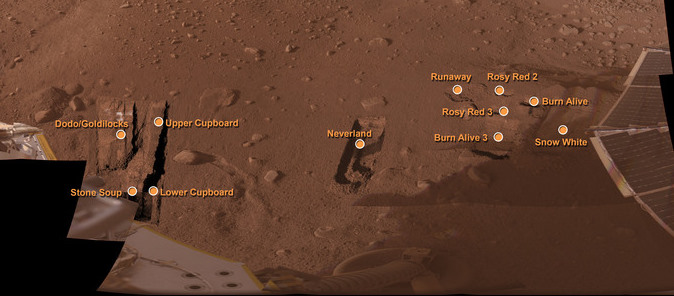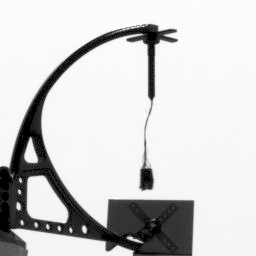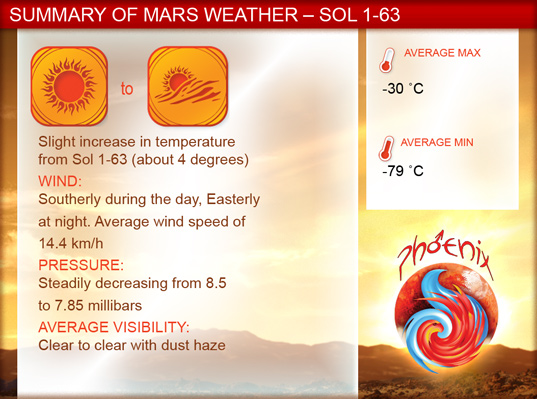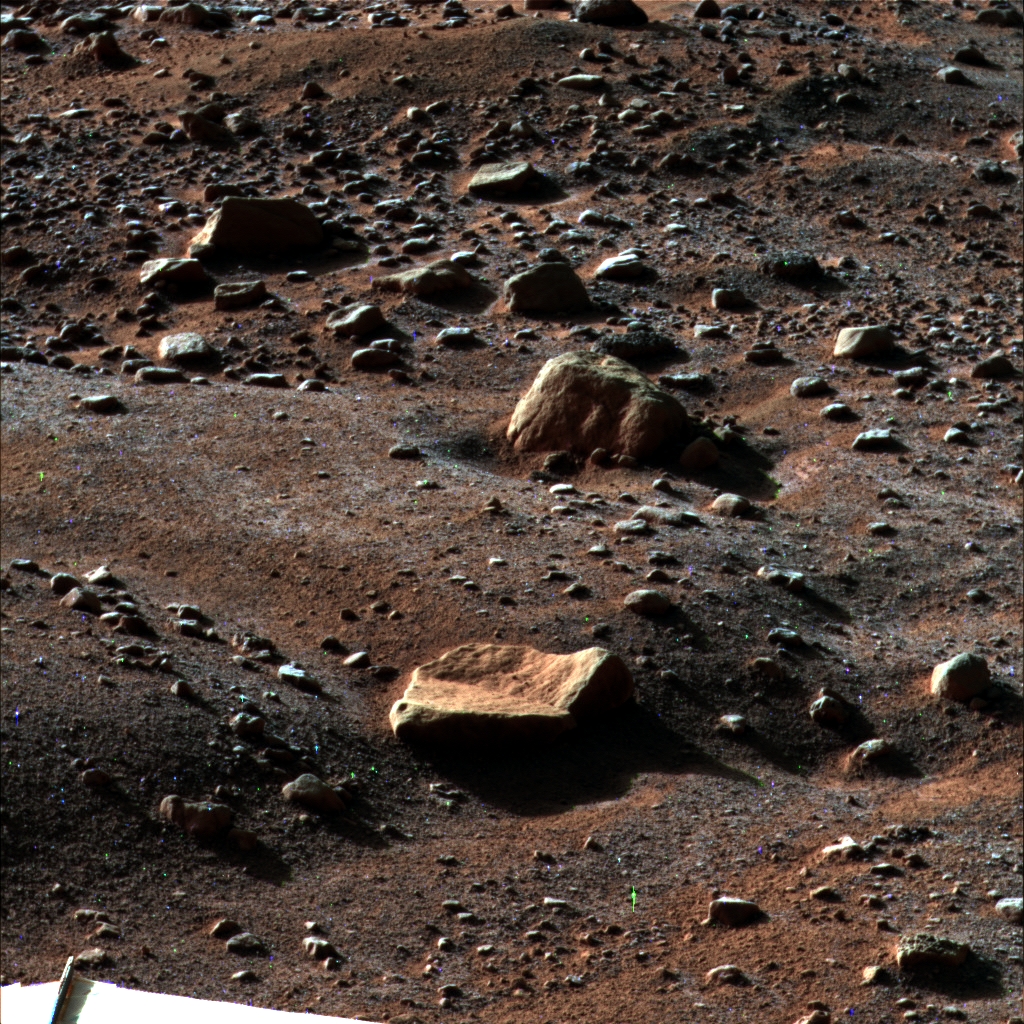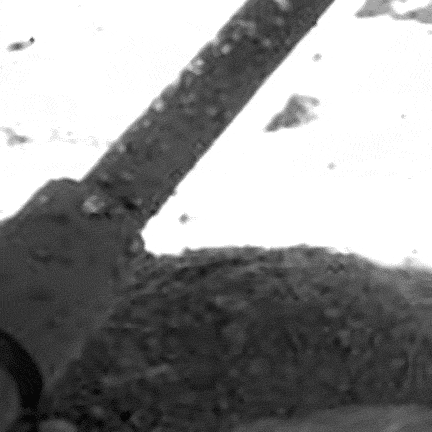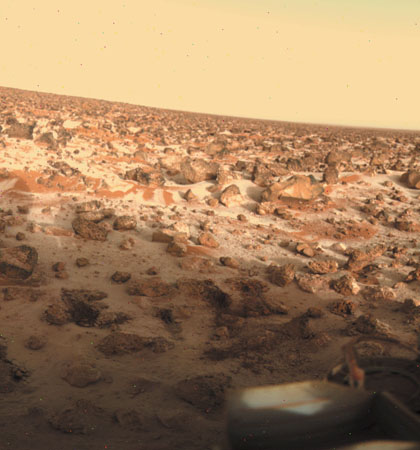[/caption]
NASA’s Phoenix Mars Lander has a fork-like conductivity probe on it’s robotic arm, and results from the instrument are presenting a bit of a quandary for mission scientists. The thermal and electroconductivity probe has sensed humidity rising and falling in the air the near the lander, but when stuck into the ground, its measurements so far indicate soil that is thoroughly and perplexingly dry. “If you have water vapor in the air, every surface exposed to that air will have water molecules adhere to it that are somewhat mobile, even at temperatures well below freezing,” said Aaron Zent, lead scientist for the probe. While Phoenix has other tools to find clues about whether water ice at the site has melted in the past, the conductivity probe is the main tool for checking for present-day soil moisture.
Preliminary results from the latest insertion of the probe’s four needles into the ground, on Wednesday and Thursday, match results from the three similar insertions in the three months since landing. “All the measurements we’ve made so far are consistent with extremely dry soil,” Zent said. “There are no indications of thin films of moisture, and this is puzzling.”
In below-freezing permafrost terrains on Earth, that thin layer of unfrozen water molecules on soil particles can grow thick enough to support microbial life. One goal for building the conductivity probe and sending it to Mars has been to see whether the permafrost terrain of the Martian arctic has detectable thin films of unfrozen water on soil particles. By gauging how electricity moves through the soil from one prong to another, the probe can detect films of water barely more than one molecule thick.
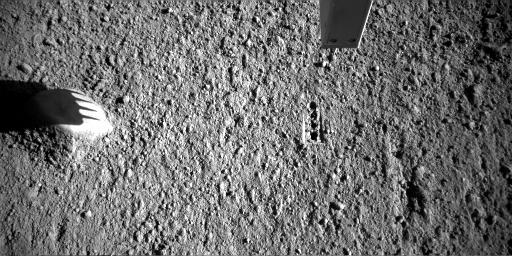
Three other sets of observations by Phoenix, in addition to the terrestrial permafrost analogy, give reasons for expecting to find thin-film moisture in the soil.
One is the conductivity probe’s own measurements of relative humidity when the probe is held up in the air. “The relative humidity transitions from near zero to near 100 percent with every day-night cycle, which suggests there’s a lot of moisture moving in and out of the soil,” Zent said.
Another is Phoenix’s confirmation of a hard layer containing water-ice about 5 centimeters (2 inches) or so beneath the surface.
Also, handling the site’s soil with the scoop on Phoenix’s robotic arm and observing the disturbed soil show that it has clumping cohesiveness when first scooped up and that this cohesiveness decreases after the scooped soil sits exposed to air for a day or two. One possible explanation for those observations could be thin-film moisture in the ground.
The Phoenix team is laying plans for a variation on the experiment of inserting the conductivity probe into the soil. The four successful insertions so far have all been into an undisturbed soil surface. The planned variation is to scoop away some soil first, so the inserted needles will reach closer to the subsurface ice layer.
“There should be some amount of unfrozen water attached to the surface of soil particles above the ice,” Zent said. “It may be too little to detect, but we haven’t finished looking yet.”
Source: Phoenix News

